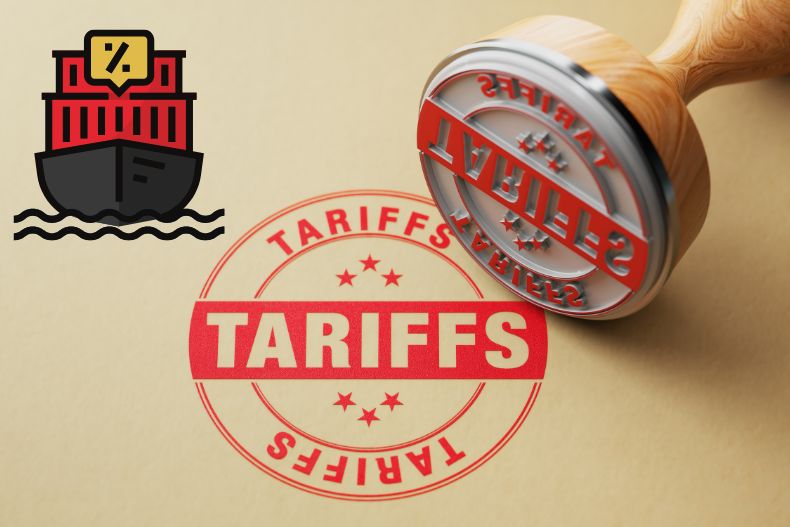Former U.S. President Donald Trump has long championed tariffs as a tool to protect American industries and bring manufacturing jobs back to the United States. However, his explanations of tariffs have often sparked controversy, with economists and industry leaders stepping in to correct his claims.
Trump framed tariffs as a cost paid by foreign countries, particularly China. In reality, tariffs are taxes imposed on imported goods, and they are primarily paid by American businesses and consumers, not the exporting country. This misunderstanding has had real-world implications, affecting everything from retail giants like Walmart to small businesses struggling with rising costs.

Trump’s Stance on Tariffs: What He Got Wrong
During his presidency, Trump implemented a series of tariffs on Chinese goods under the premise that China was “ripping off” the United States in trade. His administration imposed tariffs on billions of dollars’ worth of Chinese imports, including electronics, clothing, and household goods.
Trump repeatedly claimed that these tariffs were being paid by China, insisting that the policy was forcing Beijing to send money into the U.S. Treasury. However, numerous economists and trade experts pointed out that this was misleading. Tariffs are essentially import taxes, which are paid by American importers—companies that buy goods from overseas.
In the case of Walmart, which imports a significant portion of its products from China, these tariffs translated to higher costs for the retailer. Walmart, like many other businesses, had to decide whether to absorb these extra expenses or pass them on to American consumers in the form of higher prices.
According to Brookings Institution, the Trump tariffs led to an estimated $68.8 billion in additional costs for American importers between 2018 and 2020, proving that the burden was borne domestically rather than by China.
How Tariffs Actually Work: Who Really Pays?
To understand the impact of tariffs, let’s break it down with a simple example:
- Before Tariffs: Walmart imports a product from China for $10. It sells the product in its stores for $15, making a $5 profit.
- After Tariffs: A 25% tariff is imposed on that product, increasing its cost to $12.50 for Walmart. Now, Walmart has three choices:
- Absorb the extra cost and make a smaller profit.
- Raise the price for customers, charging $17 or more.
- Find a different supplier, which may not be as cheap or efficient as the Chinese manufacturer.
Most businesses opt for some combination of these strategies. However, in many cases, the extra cost is passed on to the consumer, meaning American shoppers end up paying more.
This has been particularly evident in industries such as consumer electronics, apparel, and household goods, where China dominates global manufacturing. For instance, tariffs on Chinese-made washing machines led to price increases in the U.S. market, costing American consumers an estimated $1.5 billion in additional expenses in a single year, according to a Federal Reserve study.
Corrections and Backlash from Experts
Trump’s repeated claims that “China is paying the tariffs” have been widely debunked by economists and trade analysts. Janet Yellen, former Federal Reserve Chair and current U.S. Treasury Secretary, stated unequivocally that tariffs are a tax on American consumers and businesses, not on foreign governments.
Even some of Trump’s advisors and Republican lawmakers privately acknowledged the flaws in his rhetoric. Larry Kudlow, one of Trump’s top economic advisors, admitted in a rare moment of honesty that “both sides will suffer” from tariffs, contradicting Trump’s claims that the U.S. was winning the trade war.
Business leaders also pushed back against the tariff policies. Walmart, Target, and other major retailers warned that continued tariffs would hurt American families by driving up prices on essential goods.
Real-World Impact: Walmart and the Consumer Price Hike
Walmart, as the largest retailer in the U.S., felt the brunt of these tariffs. The company imports a massive amount of its inventory from China, including electronics, clothing, and household goods. When Trump’s tariffs went into effect, Walmart had to make tough choices:
- Some products became more expensive for consumers. For instance, toys, kitchen appliances, and furniture saw price hikes.
- Walmart sought alternative suppliers, but shifting production away from China wasn’t easy or cheap.
- Some product lines were discontinued because they became unprofitable due to higher import costs.
At the consumer level, price increases on everyday goods affected millions of Americans, particularly lower-income households that rely on Walmart’s affordability. The tariffs essentially functioned as a hidden tax on consumers, contradicting Trump’s claims that they were only harming China.
According to CNBC, Walmart executives openly stated that they would have to raise prices due to the higher costs caused by tariffs on Chinese imports.
The Economic Consequences of Tariffs
While tariffs were meant to pressure China into changing its trade practices, the economic reality was more complex:
- Job Losses in Certain Sectors: While some industries benefited from the tariffs (such as domestic steel manufacturers), others suffered. Companies that relied on Chinese components, such as U.S. automakers and technology firms, faced higher production costs and had to lay off workers or move production overseas.
- Retaliatory Tariffs: China responded by imposing its own tariffs on American goods, particularly agricultural products. U.S. farmers, especially soybean producers, were hit hard, requiring billions of dollars in government subsidies to offset their losses.
- Stock Market Volatility: Every time new tariffs were announced, the stock market reacted negatively, with major companies losing billions in value due to uncertainty about trade policy.
A Peterson Institute for International Economics report estimated that the trade war resulted in an annual cost of $1,277 per U.S. household due to increased prices and economic inefficiencies.
Final Thoughts
Donald Trump’s misunderstanding of tariffs highlighted the importance of economic literacy in policymaking. While his administration aimed to level the playing field with China, the reality was far more complicated. Tariffs primarily impacted American consumers and businesses, leading to higher prices and economic disruptions.
As trade policies continue to evolve, it’s crucial for leaders to base decisions on economic realities rather than political soundbites. The lesson from Walmart and other major importers is clear: trade policies should be designed with a full understanding of their impact on businesses, workers, and consumers alike.










